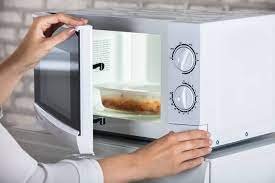Microwaves have become an indispensable part of our kitchen arsenal, offering quick heating, defrosting, and cooking solutions that fit our fast-paced lives. However, these handy appliances can sometimes start making strange noises, which can be both concerning and confusing. At TheKitchenApplianceDad.com, we understand your worries and are here to demystify those sounds and offer practical solutions.
Before panicking about the new symphony coming from your kitchen, let’s break down some of the most common noises your microwave might make and their potential causes:
A soft humming or buzzing sound is normal when your microwave is operating. This is usually the sound of the magnetron (which produces the microwaves) and the fan working. However, if the humming becomes loud or unusual, it could indicate a problem with the magnetron or the high voltage diode, which is a component that converts the A/C power output to D/C.
Hearing intermittent clicking sounds? This could be due to the turntable or the stirrer (if your microwave is equipped with one). The stirrer is responsible for distributing the microwaves evenly and might make clicking noises if obstructed. Check to see if the turntable is properly aligned on its track or if anything is obstructing the stirrer’s movement.
Popping sounds can be alarming, but they’re often harmless. They usually occur when microwaving food with a high water or fat content, which can cause steam or fat to build up and ‘pop’. Always use microwave-safe cookware and cover dishes with a microwave-safe lid or vented plastic wrap to minimize this.
These noises might indicate a problem with the microwave’s motor. In turntable-equipped models, the turntable motor could be failing. If your microwave sounds like it’s grinding or squealing while cooking, it’s advisable to get the motor inspected and possibly replaced.

Here are some steps you can take to troubleshoot and potentially fix your noisy microwave:
Ensure the turntable is correctly placed on its track. Misalignment can cause various noises, including grinding and clicking. Remove the turntable, clean the base and the wheels, and replace it correctly to see if that resolves the noise.
Sometimes, debris or food particles can get stuck in the microwave’s internal mechanisms, such as the stirrer or the fan. Ensure these parts are clean and clear of any obstructions. Be sure to unplug the microwave before attempting any internal cleaning.
A loose or damaged door seal can cause the microwave to make excessive noise due to escaping air or energy. Check the seal around the microwave door to ensure it’s clean and intact. A damaged seal should be replaced to maintain the efficiency and safety of your microwave.
Your microwave’s user manual can be a great resource for troubleshooting specific noises. Manufacturers often provide a list of common issues and solutions that can save you time and effort.
If you’ve gone through these troubleshooting steps and your microwave is still making strange noises, it might be time to call in a professional. Here are some situations where expert help is advised:
Maintaining your microwave can help prevent future problems and extend the life of your appliance. Here are some tips for keeping your microwave in top shape:
By understanding what might be causing those bizarre noises from your microwaveand how to effectively address them, you can ensure that your appliance continues to function safely and efficiently. Remember, while some noises are normal and easily fixable, others can signal serious problems that require professional attention. Always prioritize safety and don’t hesitate to seek help when needed.
At TheKitchenApplianceDad.com, we’re here to help you decode the mysteries of your kitchen appliances, ensuring you can cook up delicious meals without a hitch. Happy cooking and maintain those appliances well!

